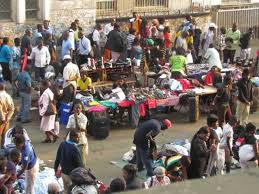
AT least four women are dying every day while giving birth in Zimbabwe and the country has recorded a staggering 121 078 deaths in the last 12 months, according to the Zimbabwe National Statistics Agency (ZimStat).
The data is based on survey results collected during the 2022 population and housing census.
“A total of 1 589 maternal deaths were reported against 437 478 live births giving a national maternal mortality ratio (MMR) — the number of maternal deaths per live birth, multiplied by a conventional factor of 100 000 — of 363 deaths per 100 000,” ZimStat director-general Taguma Mahonde said while presenting the report on mortality and orphanhood.
According to United Nations Population Fund programmes specialist Piason Mlambo, the statistics showed that the country was recording an average of four daily deaths during labour.
“Most worrying is that if you try to understand what the MMR figure of 363 deaths per 100 000 means, we have an average of four women who are dying every day while they are giving birth,” Mlambo said.
“From the maternal death surveillance and response programmes we know that the main causes being given are eclampsia (high blood pressure during pregnancy) which is largely preventable. Furthermore, MMR was higher in rural areas (402 deaths per 100 000 live births) than in urban areas (298 per 100 000 live births).”
Maternal mortality is defined by the World Health Organisation as the death of a woman, while pregnant or within 42 days of termination of pregnancy.
The major causes of maternal mortality include failure to access ante-natal services, a type of preventive health care whereby regular check-ups are provided to prevent potential health services throughout the course of pregnancy.
- Zim health system is in intensive care: How it got there
- Measles threat growing
- Thousands flee economic mess
- Take your child for measles vaccination
Keep Reading
Teenage pregnancies and risky abortions are also seen as major contributors to maternal and child mortality.
Meanwhile, the proportion of registered deaths was said to be higher for males in both rural and urban areas, the ZimStat report says.
In rural areas, 57% of the registered deaths were for males and 55% in urban areas.
According to the report, Zimbabwe’s life expectancy at birth had increased to 64,7 years from 61,49 years in 2019 with females having a longer life expectancy of 68 years compared to male counterparts at 61,2.
ZimStat census results released in July showed that females constitute the majority of the population, numbering 7 889 421 or 52%, compared to the male population of 7 289 588 (48%).
Medical and Dental Private Practitioners of Zimbabwe Association president Johannes Marisa said the results reflected how men live their lives compared to women.
“It’s not only in Zimbabwe where women outlive men. Actually on average, the world over, the life expectancy is higher in females than in males and this is attributed to a good number of factors which include: The biological status, the sexual characteristics of women that is the hormonal component of women thus the estragon being implicated in the longevity of life,” Marisa indicated.
“Women are generally more particular about their health than their male counterparts. Risk behaviours which kill a lot of men for instance drinking and driving, gun violence and these bad behaviours are associated with men compared to women.
On orphanhood, the report said out of the 396 010 orphans in rural areas, 274 183 (69,2%) were paternal orphans, 71 626 (18,1%) maternal orphans, and 50 201 (12,7%) were double orphans.
In urban areas, out of the 153 475 orphans, 107 885 (70,3%) were paternal orphans 30 151 (19,6%) were maternal orphans and 15 439 (10,1%) were double orphans.
We erroneously ran the headline to this story as ‘120 000 women die giving birth’ instead of 1 589. The story remains correct. We sincerely apologise to our readers and stakeholders for the error. - Editor











